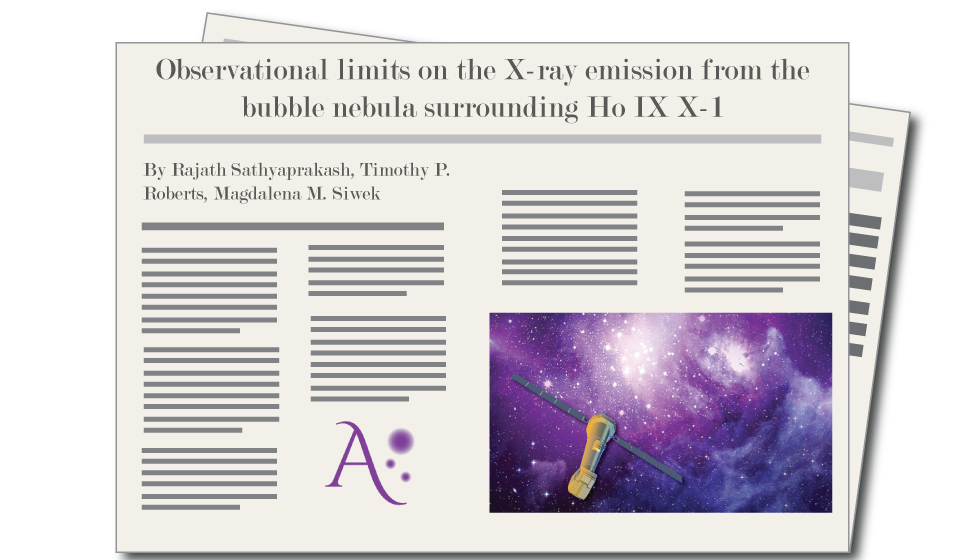
Observational limits on the X-ray emission...

By R. Sathyaprakash
Optical and radio observations of shock-ionised bubble nebulae surrounding ultraluminous X-ray sources (ULXs) suggest that they are powered by jets or super-critical outflows presumably launched from the ULX accretion disc. Recent simulations of these systems have shown that the shocked wind can emit thermal X-rays with estimated luminosities ~1036 erg s−1. In this work, we investigated whether it is possible to detect and spatially resolve the X-ray emission from these systems using archival Chandra observations of the ULX Holmberg IX X-1. This source is an ideal target to study for two reasons: it is surrounded by an optical bubble nebula with a large
spatial extent (∼ 400 pc) that can easily be resolved with Chandra. Further, it has a
hard X-ray continuum that is easily distinguishable from the expected soft thermal
emission from the nebula. However, a spectral and photometric analysis on stacked
Chandra observations of the source reveals that there is no strong evidence for an X-ray
bubble associated with it, to a limiting luminosity of ∼ 2 × 1036 erg s−1. The detection
of such X-ray nebulae may be possible with future X-ray missions such as Athena,
which would provide useful constraints on the kinematics of the outflow. Finally, our
observations also emphasise that the nebular emission does not contribute significantly to the residuals in the X-ray spectrum of the source, which are more likely to be linked to processes localised to the ULX.

